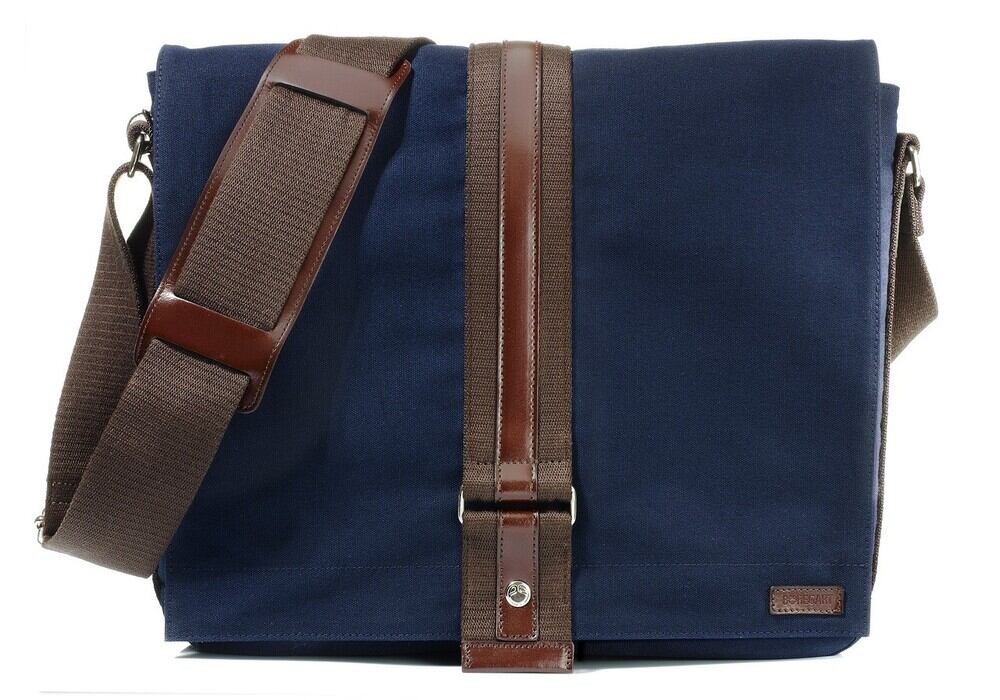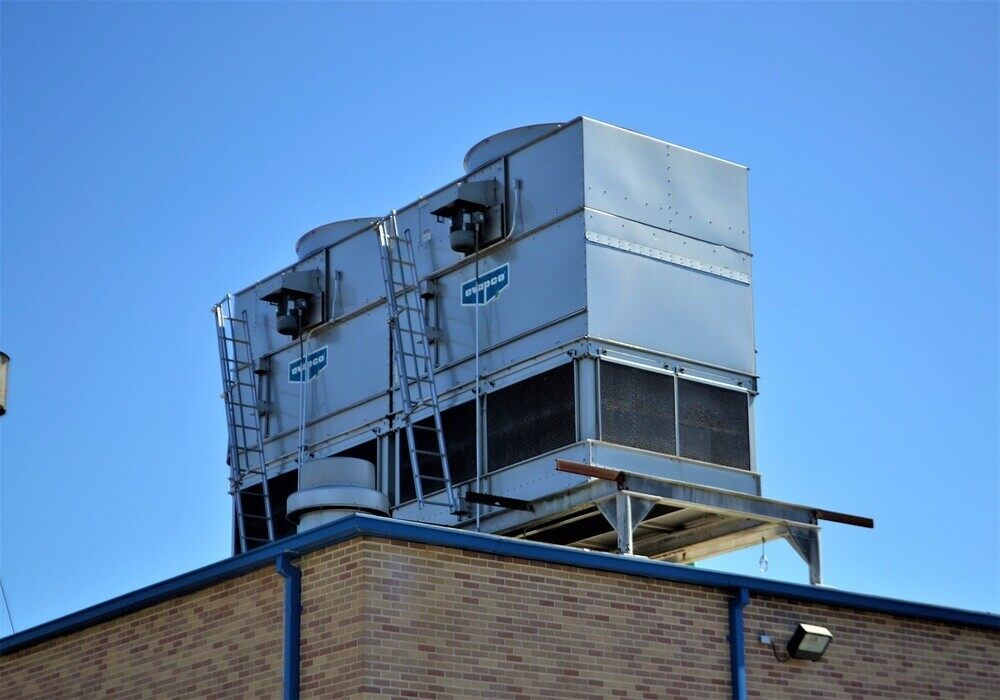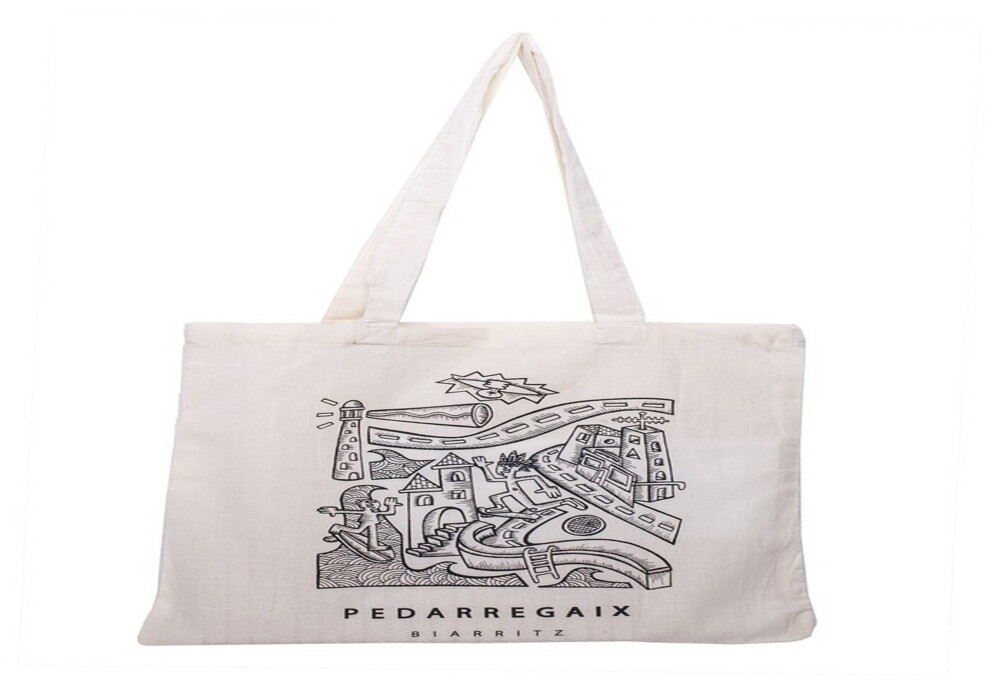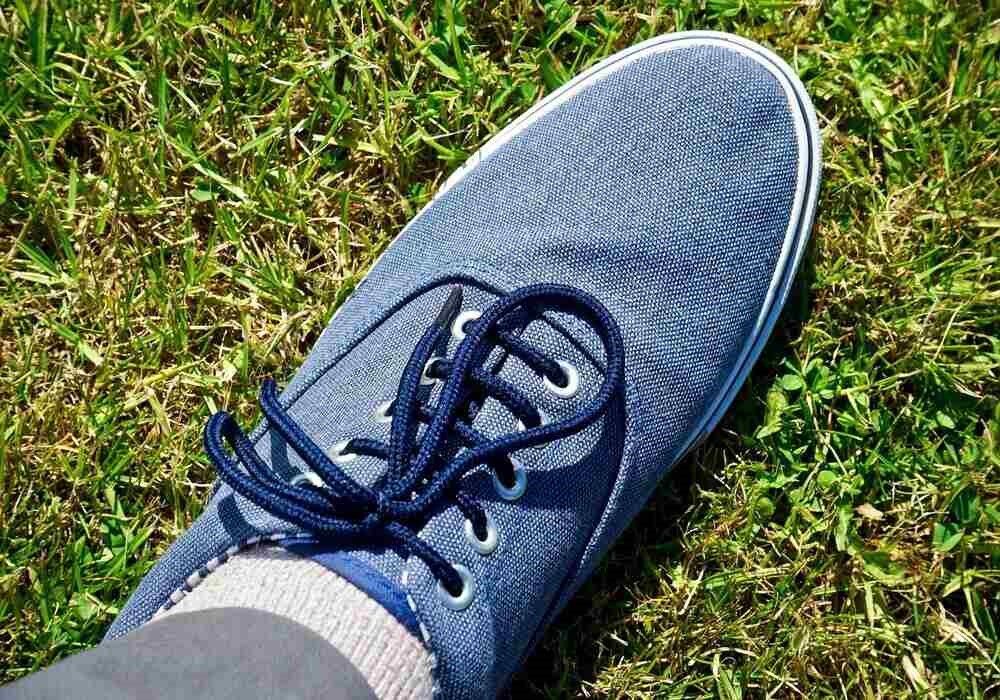Table of Contents
According to recent statistics, the global canvas fabric market is expected to reach USD 909.90 million by 2023, and further expand at a CAGR of 5.90% to reach USD 1614.70 million by the end of 2033. This report is given by Factmr.com
This growth is attributed to the increasing demand for canvas fabric in various industries, including bag manufacturing, home furnishings, and outdoor equipment. Understanding the types of canvas fabric available in the market and choosing the apt one for your project is the goal of this blog.
Canvas fabric is one of the most versatile and durable materials in the textile industry, and it has been used for centuries for a wide range of applications.
As a result, canvas fabric has become a popular choice for many entrepreneurs and start-up textile companies looking to create high-quality and long-lasting products. In this comprehensive guide, we will explore the different types of canvas fabric available, their uses, and the various qualities and characteristics that make each type unique.
We will also delve into tips on how to choose the right canvas fabric for your specific needs. Whether you are a bag manufacturer, AC maintenance company, or amateur textile entrepreneur, this guide will provide you with valuable insights and information on one of the most popular and versatile fabrics in the textile industry.
Before getting further I would like to like to introduce myself as a textile and apparel entrepreneur. Running a 3rd generation family-run business. Believe that learning is a process that cannot be stopped. Secondly, learning is incomplete without implementation.
I am on a blogging journey where I am sharing my knowledge on various textile and apparel products. I all started since 1997 when I stepped into this industry. A detailed introduction would be available on my About Us page. Feel free to check it out.
How to make canvas fabric?

Canvas fabric is a popular and versatile material used in various industries, from fashion to construction. It is known for its durability, strength, and ability to withstand wear and tear. But have you ever wondered how this fabric is made? In this section, we will discuss the process of making canvas fabric.
Types of Fibers Used in Canvas Production
Canvas fabric can be made from different types of fibers such as cotton, linen, or synthetic fibers like Nylon or Polyester. Cotton canvas is the most commonly used type of canvas fabric due to its affordability and versatility. Linen canvas is also popular due to it’s premium look, better durability than cotton, and premium feel. Thus but more expensive than cotton canvas.
Weaving Process
The production of synthetic canvas involves weaving the fibers together to create a strong and durable material. The weaving process starts with spinning the fibers into yarns that are then woven together using a specialized loom. These yarns could be raw stage or in process in white or color form.
Then comes the warping stage, where yarns are aligned in a horizontal manner. Which is then fed into the looms. The loom interlaces the yarns horizontally (weft) and vertically (warp) yarns creating a tight-knit pattern that makes it difficult for water or air to pass through.
Cotton Canvas Production
Cotton Canvas is a natural fabric made from natural fibers. I have a detailed blog mentioning “A List of Best Natural Fabrics Names & Qualities in Market” Do check this blog if you aspire to know more about other natural fabrics.
In the case of cotton canvas, production starts with harvesting cotton bolls from cotton plants, which are then cleaned and separated from seeds using a ginning machine. The cotton fibers are then carded, which means they are brushed to remove any impurities before being spun into yarns.
Once the yarns are ready, they are woven together on a special loom into large rolls of unbleached cotton canvas fabrics. These rolls are then sent for bleaching, dyeing, or printing. Where they undergo chemical treatment to remove natural coloration from the fibers, giving them their characteristic white or desired color.
Waxed Canvas Production
Waxed canvas is created by adding a layer of wax to cotton canvas making it water-resistant and more durable than regular cotton canvas fabrics. This type of fabric was initially used by sailors who needed waterproof clothing for harsh weather conditions at sea.
To make waxed cotton fabrics, manufacturers apply a layer of wax to the surface of the cotton canvas fabric using heat. The wax melts, seeps into the fibers, and hardens upon cooling creating a water-resistant coating that makes it ideal for outdoor use.
Duck Canvas Production
Duck canvas, also known as cotton duck canvas, is a heavy-duty type of canvas fabric that is commonly used for industrial purposes such as making tents, tarps, and workwear. It is made from high-quality cotton yarns that are tightly woven together to create a dense and durable material.
To create duck canvas, cotton yarns are spun thickly and then woven together on a loom. This results in a fabric that has a tight weave pattern that makes it resistant to tearing and wear and tear.
Canvas Texture
Canvas texture can vary depending on the type of fiber used and the production process. Cotton canvas fabrics have a slightly rough texture due to their natural fibers while linen canvas fabrics have a smoother texture due to their longer fibers.
Waxed canvas fabrics have an uneven texture due to the presence of wax while duck canvas fabrics have a dense and sturdy texture due to their tightly woven pattern.
Canvas Fabric: Understanding the Different Types and Uses
Canvas fabric is a woven fabric that has been used for centuries due to its durability and strength. It is made from a variety of materials, including cotton, linen, and synthetic fibers, but cotton canvas fabrics are the most common type of canvas material. In this section, we will explore the different weaves and uses of canvas fabric.
Plain Weave Canvas Fabric
The plain weave is the most common type of weave used in canvas production. It creates a canvas texture that is both sturdy and breathable. The plain weave consists of interlocking warp and weft yarns at right angles to each other. This creates a strong and stable fabric that can withstand heavy use.
Cotton Canvas Fabrics
Cotton canvas fabrics are the most commonly used type of canvas material due to their versatility and affordability. They are often used in the production of bags, tents, and other outdoor gear because they are lightweight yet durable. Cotton canvas fabrics come in a variety of weights ranging from 7 oz to 24 oz per square yard.
Industrial Canvas
Industrial canvas is a heavier-weight canvas that is often used in applications such as tarps, covers, and awnings due to its high level of durability. This type of canvas fabric can withstand harsh weather conditions such as rain, wind, snow, or hail without tearing or fraying.
Waxed Canvas
Waxed canvas is a type of cotton canvas that has been treated with wax to make it water-resistant and more durable. Waxed cotton canvases were originally developed for sailors who needed clothing that could withstand harsh weather conditions while out at sea. Today waxed cotton canvases are popular choices for outdoor gear such as backpacks or jackets.
Linen Canvas
Linen canvas is another type of woven fabric made from flax fibers which have been cultivated since ancient times for their strength and durability. Linen canvases are often used by artists for painting due to their smooth texture and ability to hold paint well.
Cotton Duck Canvas
Cotton duck canvas is a heavier-weight cotton canvas that is commonly used in upholstery and home decor. It has a tight weave that makes it strong and durable, yet still lightweight enough to use in various applications.
What is canvas fabric used for

Canvas fabric is a popular and versatile material that has been used for centuries due to its durability and strength. It is commonly made from cotton, linen, or a blend of both. Cotton canvas fabrics are the most popular type of canvas fabric due to their affordability and versatility.
Canvas fabric is often used for outdoor and heavy-duty applications such as tents, tarps, and awnings. Its ability to withstand harsh weather conditions makes it an ideal choice for outdoor use. Canvas fabric is also commonly used in the fashion industry for bags, shoes, and jackets.
Duck canvas is a type of canvas fabric that is particularly strong and resistant to tearing. It gets its name from the Dutch word “doek,” which means cloth. Duck canvas has a tight weave that makes it more durable than other types of canvas fabrics. This makes it perfect for heavy-duty applications like workwear, upholstery, and bags.
Waxed canvas is another type of canvas fabric that has been treated with wax to make it waterproof and more durable. The wax gives the fabric a unique texture that ages beautifully over time. Waxed canvas was originally used by sailors in the 19th century as a sailcloth but has since become popular in fashion and accessories.
Industrial canvas is a heavy-duty type of canvas fabric that is commonly used in manufacturing and construction industries. It’s made from high-strength fibers like polyester or nylon and can withstand extreme temperatures, chemicals, and abrasion. Industrial canvas can be found in products like conveyor belts, tarps, filters, and even airbags.
Canvas production involves weaving together yarns on a loom to create a sturdy yet flexible material with a distinctive texture known as “canvas texture.” The thickness of the yarns used determines the weight of the finished product; heavier yarns result in thicker fabrics with higher weight per square meter.
Cotton duck canvas is one of the most common types of cotton canvases available today due to its durability, versatility, and affordability. It’s used in a wide range of applications from outdoor gear to home decor.
When using canvas fabric, it’s important to consider its weight and strength for the intended application. For example, a lighter-weight canvas may be suitable for making a tote bag, but heavier weight canvas would be better suited for a backpack or tent.
Canvas cloth for ducting

The texture of duck canvas is characterized by its tightly woven fibers that are tightly packed together. This makes it ideal for use in harsh environments where the fabric may be exposed to extreme temperatures, chemicals, or abrasive materials. Cotton canvas is also a popular choice for ducting because it can be easily treated with wax or other coatings to make it water-resistant and more durable.
Canvas production for ducting involves weaving the fabric on specialized looms and then treating it with chemicals or coatings to enhance its properties. The process of weaving the fabric involves interlacing two sets of threads at right angles to each other. This creates a strong and durable material that can withstand wear and tear over time.
One of the main advantages of using canvas cloth for ducting is its ability to resist tearing and puncturing. This makes it an ideal material for use in air ducts where there may be sharp edges or rough surfaces that could damage weaker materials. Additionally, canvas fabric has excellent insulation properties, which help to regulate temperature and reduce energy costs.
Another advantage of using canvas cloth for ducting is its versatility. Canvas can be easily customized to fit any size or shape required by the application. It can also be treated with different coatings or finishes depending on the specific needs of the project.
While cotton duck canvas is the most common material used in industrial canvas fabrics like ducting cloth, other types of canvas may also be used in some applications. For example, linen canvas may be used when a lighter-weight material is required.
Canvas cloth for bags
Canvas Cloth for Bags: A Durable and Fashionable Choice
Canvas fabric has been a popular choice for bags due to its durability and strength. It is a woven fabric that is made from either natural or synthetic fibers, with cotton canvas being the most commonly used material.
Cotton Canvas Fabrics for Bag Making
Cotton canvas is a strong and durable material that can withstand heavy use. It is also easy to work with, making it an ideal choice for bag-making. Cotton duck canvas, in particular, is tightly woven and has a smooth surface texture that makes it perfect for bags that require structure.
Canvas Made from Synthetic Materials
Canvas made from synthetic materials like polyester and nylon are generally used in the production of backpacks. These materials offer additional benefits such as water resistance and increased durability, making them ideal for outdoor activities.
Printed Canvas Bags

Cotton canvas bags with prints add a fashion element to an otherwise utilitarian item. They are often used in tote bags, which have become increasingly popular as eco-friendly alternatives to plastic shopping bags.
Linen Canvas: An Alternative Option for Bag Making
Linen canvas is a premium option for bag making, although it is less commonly used than cotton canvas. Linen has similar properties to cotton but tends to be more expensive due to its higher quality and texture.
Canvas cloth for tent
Canvas Cloth for Tent: The Ultimate Choice for Durability and Strength
Canvas cloth is the go-to material for many manufacturers due to its durability and strength. Canvas fabrics are made from a variety of materials such as cotton, linen, or synthetic fibers. However, cotton canvas fabrics and duck canvas are the most commonly used materials in tent production.
Canvas Material Provides Sturdy Structure for Tents
The texture of canvas material provides a sturdy structure for tents, making them resistant to harsh weather conditions. Most canvas fabrics are tightly woven with coarse yarn and a plain weave pattern that makes them strong enough to withstand heavy winds and rain. Additionally, the natural fibers in cotton canvas give it a unique ability to breathe, which helps regulate the temperature inside the tent.
Waxed Canvas Adds Extra Protection Against Moisture
Waxed canvas is also a popular choice for tent production as it adds an extra layer of protection against moisture and water. The wax coating on the fabric repels water while allowing air to pass through. This feature makes waxed canvas ideal for camping in rainy or wet conditions.
Canvas Canoes: A Perfect Example of Durability
Canvas canoes are another example of how durable and versatile canvas fabric can be. These canoes are made using canvas fabric due to their ability to withstand water and provide a strong structure. The tight weave pattern of cotton duck canvas makes it perfect for canoe construction as it prevents water from seeping through.
Industrial Canvas: Ideal For Larger Tents And Structures
Industrial canvas is used for larger tents and structures due to its strength and durability compared to other types of canvases. It is made from synthetic fibers that make it resistant to tears, abrasions, and punctures. Industrial canvases are often coated with PVC or polyurethane which gives them added protection against UV rays, mildew, and fire.
Canvas drop cloth
Canvas Drop Cloth: The Perfect Protective Covering for Painting and Construction Projects
One of the most important things you need is a protective covering. This is where the canvas drop cloth comes in. Canvas drop cloth is a type of canvas fabric that is commonly used as a protective covering during painting or construction projects. It is made from cotton duck canvas, which is a durable and heavy-duty material that can withstand wear and tear.
The texture of canvas drop cloth is rough and coarse, providing a good grip for paint and preventing slips and spills. This makes it an excellent choice for painters who want to avoid accidents while working on their projects. Additionally, the rough texture also helps to prevent the cloth from slipping on surfaces like floors or stairs.
One of the most common materials used for canvas drop cloths is cotton duck canvas. Cotton duck canvas is a tightly woven fabric that has been treated with wax to make it water-resistant and more durable. This makes it suitable for outdoor use as well as indoor use.
While cotton duck canvas is the most common material used for canvas drop cloths, other types of canvas such as linen canvas or industrial canvas can also be used depending on the intended use. Linen canvas, for example, has a smoother texture than cotton duck canvas which makes it ideal for artists who want to create detailed paintings without any interference from the texture of the fabric.
Industrial-grade canvases are designed to be extremely tough and durable which makes them perfect for heavy-duty applications such as covering machinery or equipment during transportation.
Waxed Canvas: An Even Better Option
Some manufacturers treat their cotton duck canvases with wax to make them even more water-resistant and durable. Waxed canvases are perfect if you’re looking for something that will last longer than regular cotton duck canvases.
Waxing involves applying melted wax onto the surface of the fabric using heat guns or brushes. The wax seeps into the fibers of the fabric, making it more water-resistant and durable. This process also gives the canvas a unique look and feel that many people find appealing.
Other Types of Canvas
Apart from cotton duck canvas, there are other types of canvas fabrics that can be used to make drop cloths. These include linen canvas, industrial canvas, and even synthetic fabrics like polyester or nylon.
Linen canvas is made from flax fibers which give it a smoother texture than cotton duck canvas. This makes it ideal for artists who want to create detailed paintings without any interference from the texture of the fabric.
Industrial-grade canvases are designed to be extremely tough and durable which makes them perfect for heavy-duty applications such as covering machinery or equipment during transportation.
Synthetic fabrics like polyester or nylon are as durable as natural materials like cotton or linen but they do have some advantages. For example, they are lightweight and easy to clean which makes them ideal for use in areas where spills are likely to occur. These synthetic canvases economical compared to other counterparts.
Canvas cloth for shoes

Canvas Cloth for Shoes: A Strong and Durable Option
Canvas fabric is a popular choice for shoe manufacturers due to its durability and strength. It is a woven fabric that is made from cotton, linen, or synthetic fibers. Canvas fabrics are known for their sturdiness, making them an ideal material for shoes that need to withstand wear and tear.
Cotton canvas fabrics are the widely used type of canvas in shoe production. They are lightweight, breathable, and easy to dye. Cotton canvas comes in various weights and textures, including duck canvas.
Another option for shoe production is waxed canvas. Waxed canvas is a cotton canvas that has been treated with wax to make it water-resistant and more durable. This type of canvas is often used in outdoor shoes as it can withstand harsh weather conditions.
Linen canvas is less common than cotton canvas but has a unique texture that makes it popular in high-end shoe production. Linen fibers are stronger than cotton fibers, giving linen canvas added durability.
Industrial canvas is another heavy-duty option that is commonly used in the production of safety shoes and work boots. This type of canvas material can withstand extreme conditions, making it an ideal choice for shoes worn by workers who need extra protection.
Choosing the right material can make all the difference in terms of durability and longevity. Canvas materials offer many benefits over other types of materials such as leather or synthetic fabrics.
Canvas fabrics are not only strong but also breathable which allows air circulation around the feet reducing sweat buildup which leads to bad odor or bacterial growth inside the shoes causing health problems like athlete’s foot or toenail fungus infections.
In addition to being strong and breathable, canvas fabrics are also easy to maintain. They can be cleaned easily with soap and water, making them a low-maintenance option for shoe production.
Canvas materials are also versatile in terms of design. They can be dyed in various colors and patterns, giving shoe manufacturers the freedom to create unique designs that stand out from the crowd.
Canvas Fabric for Upholstery
Choosing the right fabric is crucial. It not only affects the look of your furniture but also its durability and comfort. Canvas fabric has been a popular choice for upholstery for many years due to its strength and resilience. In this section, we will discuss why canvas fabric is an excellent choice for upholstery and what types of canvas fabrics are commonly used.
Durability and Strength of Canvas Fabric
Canvas fabric is known for its durability and strength, making it an ideal choice for upholstery. Its tightly woven fibers make it resistant to wear and tear, making it perfect for high-traffic areas such as living rooms or commercial spaces. Canvas fabric can withstand heavy use without showing signs of damage or fraying.
Cotton Canvas Fabrics
Cotton canvas fabrics are among the most commonly used materials in upholstery. They are soft, breathable, and easy to work with, making them a favorite among DIY enthusiasts. Cotton canvas fabrics come in various colors and patterns, allowing you to choose the perfect one that complements your decor.
Cotton Duck Canvas
Cotton duck canvas is another type of cotton canvas material that is often used in upholstery due to its tight weave. The tight weave makes it more resistant to wear and tear than other types of cotton canvas fabrics. Cotton duck canvas can be dyed in various colors or left natural for a classic look.
The texture of Canvas Fabric
The texture of canvas fabric can vary depending on the type of weave used in production. Linen canvas has a smoother texture than cotton duck canvas, which has a rougher texture due to its tighter weave. The texture you choose depends on your preference and how you want your to feel.
Industrial Canvas
Industrial canvas is a heavy-duty woven fabric that is often used for commercial upholstery applications such as restaurant booths or office chairs. It’s made from durable synthetic fibers that make it resistant to water damage, stains, and fading. Industrial canvas is available in various colors and patterns to match your decor.
Waxed Canvas and Duck Cloth
Waxed canvas and duck cloth are other types of canvas that can be used for upholstery. They offer additional water resistance and durability, making them ideal for outdoor furniture or high-traffic areas. Waxed canvas is treated with wax to make it water-resistant, while duck cloth has a tighter weave than regular cotton canvas fabrics.
How to Soften Canvas Fabric
Canvas fabric can be stiff when first purchased, but it softens over time with use. However, if you want to speed up the process, there are several ways to soften canvas fabric. One way is to wash it in cold water with mild detergent and then tumble dry on low heat. Another way is to iron the fabric on a low setting while still damp.
Canvas Fabric for art and painting.
At times some ask Can You Paint Canvas Fabric?
Yes, you can paint on canvas fabric! In fact, it’s one of the most popular surfaces for painting due to its durability and texture. When painting on canvas, it’s important to prime the surface first with gesso or another primer to prevent the paint from soaking into the fibers and causing discoloration over time.
Canvas fabric is a popular choice for artists and painters due to its durability and texture. The texture of canvas adds depth and dimension to paintings, allowing artists to create unique effects. Using canvas as a painting surface has been a tradition for centuries, with canvas production dating back to the 13th century.
Cotton Canvas
Cotton canvas is one of the most commonly used canvas materials for art and painting. Cotton canvas fabrics are affordable and easy to find. They come in various weights, from lightweight to heavy-duty, depending on the artist’s preference. Cotton duck canvas is a popular option among artists because it is sturdy and can withstand multiple layers of paint without sagging or stretching.
Linen Canvas
Linen canvas is another widely used material for art and painting. It is more expensive than cotton but offers a smoother surface that some artists prefer. Linen canvases have finer threads that create a tighter weave than cotton, resulting in less visible texture on the surface of the painting.
Industrial Canvas
Apart from traditional cotton and linen canvases, industrial canvas has also become increasingly popular among contemporary artists who want to experiment with different materials. Industrial canvas comes in various forms, such as waxed or coated canvases that offer unique textures or finishes that can add depth and dimension to paintings.
Mounting Canvases
Canvas fabric is a flexible material that can serve multiple purposes. It can be mounted on frames or utilized as a standalone surface for painting. When mounting canvases onto frames, it’s important to stretch them tightly across the frame so that they don’t sag over time due to the weight of the paint. This can be achieved by using stretcher bars or a canvas plier tool to pull the fabric taut.
Canvas Texture
The texture of canvas is one of its most distinctive features. The weave of the fabric creates small ridges and valleys that catch the light differently, giving paintings a unique visual depth. Artists can use this texture to their advantage by applying paint in different ways, such as thick impasto strokes or thin glazes that allow the texture to show through.
Market Qualities of Cotton Canvas.
I have listed below the available market qualities that are generally available off the self for the most part of the year. If you have a project that you intend to start or currently running a project that you want to try your hands on. I have listed a set of qualities that are made of 100% cotton in plain and duck weave.
All these qualities are inherent in the raw fabric, which comes direct from the loom. If any value addition needs to be done, then the GSM and construction would have a marginal change.
07 x 07 / 68 x 38 – 394 GSM – Plain weave
10 x 06 / 76 x 28 348 GSM – Duck weave
10 x 10 / 68 x 38 275 GSM – Plain weave
16 x 08 / 84 x 28 -243 GSM – Duck weave
12 x 10 / 56 x 48 – 238 GSM – Plain weave
11 x 8 / 44 x 40 – 230 GSM – Plain weave
11 x 11 / 44 x 46 – 213 GSM – Plain weave
16 x 12 / 84 x 26 – 204 GSM – Duck weave
10 x 10 / 40 x 36 – 198 GSM – Plain weave
12 x 16 / 56 x 48 – 193 GSM – Plain weave
I hope the above list helps you make the best decision for your projects.
Top 5 Types of Canvas Fabric for Bags: Which One is Right for Your Brand?
Choosing the right canvas fabric for your bags is crucial to ensuring durability, functionality, and style. With so many options available in the market, it can be overwhelming to decide which one is best suited for your brand. In this section, we will discuss the top 5 types of canvas fabric for bags and help you determine which one is right for your project.
Cotton Canvas Fabrics: The Most Popular Choice
Cotton canvas fabrics are undoubtedly the most popular choice for bag production due to their durability and versatility. They are made from natural cotton fibers that are tightly woven together to create a sturdy material that can withstand wear and tear. Cotton canvas fabrics come in various weights, ranging from lightweight to heavyweight, making them suitable for different types of bags.
Cotton Duck Canvas: Heavyweight Fabric For Industrial Bags and Outdoor Gear
Cotton duck canvas is a heavyweight fabric that is commonly used for industrial bags and outdoor gear. It is thicker than regular cotton canvas fabrics, making it more durable and resistant to abrasion. The cotton duck canvas has a tight weave pattern that gives it strength and stability, making it ideal for heavy-duty applications.
Waxed Canvas: Treated with Wax For Added Water Resistance And Durability
Waxed canvas is a type of cotton canvas that has been treated with wax for added water resistance and durability. The wax coating makes the fabric more resistant to moisture, stains, and scratches while giving it a unique vintage look. Waxed canvas is an excellent choice for bags that need to withstand harsh weather conditions or frequent use.
Linen Canvas: Lightweight Option For Fashion Bags And Accessories
Linen canvas is a lightweight option that is often used for fashion bags and accessories. It has a smooth texture that gives it an elegant appearance while being strong enough to hold its shape. Linen canvas comes in various colors and prints, making it perfect for creating stylish tote bags or purses.
Other Canvas Materials: Blends of Cotton And Polyester

Modern canvas production techniques have led to the development of other canvas materials, which as a blend of cotton and polyester. These blends offer the best of both worlds, combining the durability of cotton with the wrinkle-resistant and quick-drying properties of polyester. They are ideal for creating bags that require both strength and flexibility.
Choosing The Right Canvas Fabric For Your Project
Depending on the project you are working on, you may choose the appropriate fabric. For industrial bags that need to withstand heavy-duty use, cotton duck canvas would be an appropriate choice. For outdoor gear that needs to be durable and water-resistant, waxed canvas would solve the purpose. If you’re looking for a lightweight option for fashion bags or accessories, linen canvas would be a great choice.
For projects that require versatility in terms of color and prints, cotton canvas with prints would give great success. It’s essential to consider your brand’s aesthetic and functionality requirements while choosing the right fabric for your bags.
The Environmental Benefits of Using Canvas Fabric Over Synthetic Materials
As our society becomes more aware of the impact we have on the environment, it’s important to consider the materials we use in our everyday lives. One area where we can make a significant difference is in the textiles industry. Cotton canvas fabrics are an excellent example of a sustainable and eco-friendly material that can replace synthetic materials.
Cotton canvas fabrics are made from natural fibers, making them biodegradable and eco-friendly. Unlike synthetic materials that take hundreds or even thousands of years to decompose, cotton canvas will break down naturally over time. This means that when you’re finished using your canvas products, they won’t end up polluting our oceans and landfills for generations to come.
Canvas production also requires less energy and water compared to synthetic materials, reducing the carbon footprint of the textile industry. The process of creating synthetic materials involves a lot of energy-intensive steps such as refining petroleum and chemical treatments. In contrast, cotton canvas production uses significantly less energy and water while still producing high-quality fabric.
Using canvas fabric instead of synthetic materials can help reduce plastic pollution in the environment. Many synthetic textiles are made from plastic fibers such as polyester or nylon. When these fabrics are washed, they release tiny microfibers into our waterways that eventually end up in our oceans and harm marine life. By choosing cotton canvas instead, you’re helping to prevent this type of pollution.
Waxed canvas is a popular type of canvas fabric that is often made from organic materials and can be easily recycled or repurposed. Waxed canvas is created by coating cotton canvas with wax which gives it added durability and water resistance properties. Once your waxed canvas product has reached the end of its life cycle, it can be easily recycled or repurposed into something new.
Cotton duck canvas is another common type of canvas fabric that is durable and long-lasting, reducing the need for frequent replacements and waste. Duck canvas is
Conclusion
In conclusion, canvas fabric is a versatile and durable material that has been used for centuries in various applications. With its popularity increasing in recent years due to its environmental benefits over synthetic materials, it’s no wonder why canvas fabric is a go-to choice for many products.
Understanding the different weaves and uses of canvas fabric can help you choose the right type for your purpose. From bags to tents, shoes to upholstery, there is a type of canvas fabric that suits every application.
The process of making canvas fabric involves weaving together threads of natural fibers such as cotton or linen. This creates a strong surface that can withstand wear and tear while still being water-resistant.
While canvas fabric has many advantages such as durability and quality, it also has some disadvantages. For instance, it may not be suitable for all applications due to its weight and thickness.
However, with proper care and maintenance, canvas fabric can last for years without losing its shape or color. It’s no wonder why artists have chosen this medium for their paintings throughout history.
Before we part ways, I hope that you have found value in reading this article, and inspires you to implement this knowledge in your current or upcoming projects. If you ever need help and require yardage in canvas fabric. would be happy to help. Please get in touch via my contact page. Else, mail me at [email protected] with your requirements, and you can be sure to receive a response from me.
FAQ
Difference between “oxford cloth vs canvas”
Here are some key differences between Oxford cloth and canvas cloth:
1. Weave: Oxford cloth is a type of basket weave, while canvas cloth is a plain weave or a basket weave.
2. Weight: Oxford cloth is generally lighter in weight than canvas cloth.
3. Durability: Canvas cloth is known for its high durability and resistance to wear and tear, while Oxford cloth is less durable.
4. Texture: Oxford cloth has a smooth, silky texture, while canvas cloth has a rougher texture.
5. Appearance: Oxford cloth has a distinctive “checkerboard” pattern, while canvas cloth has a more uniform appearance.
6. Uses: Oxford cloth is commonly used for dress shirts, while canvas cloth is used for a wide range of applications, including bags, tents, and outdoor equipment.
Overall, while both Oxford cloth and canvas cloth are popular fabrics, they have different characteristics that make them more suitable for specific applications.
Comparison between “duck cloth vs canvas”
Here are some main comparative points between duck cloth and canvas:
1. Weave: Canvas cloth is a plain weave, while duck can be a plain weave or a basket weave.
2. Weight: Duck cloth is generally lighter in weight than canvas.
3. Durability: Duck is known for its high durability and resistance to wear and tear, while canvas cloth is less durable.
4. Texture: Canvas cloth has a smoother texture than duck, and may also have a softer hand feel.
5. Appearance: Canvas cloth has a more uniform appearance than duck, and is often used in solid colors or small prints, while duck may have a more rugged appearance and is often used in natural or earth tones.
6. Uses: Canvas cloth is commonly used for home decors, such as curtains or upholstery, while duck is used for a wide range of applications, including bags, tents, and outdoor equipment.
Overall, while both duck cloth and canvas are versatile fabrics, they have different characteristics that make them more suitable for specific applications.
Should I wash duck cloth before sewing?
It depends if you are sewing duck cloth which is processed or in the raw stage. If it’s in the raw stage it needs to be washed before sewing. If it is processed it would have gone through shrinking loss. Secondly, if it’s made of cotton or linen it needs to be washed. As these fibers have a tendency to shrink. Duck cloth is made from coarse yarn and tightly woven. And hardly has scope to shrink. Even if it shrinks it would be a very small margin.
Is canvas material recyclable?
Canvas material can be recyclable, but it depends on the specific type of canvas and how it was manufactured. Canvas made from natural fibers such as cotton or hemp is biodegradable and can be composted at the end of its life cycle. However, canvas made from synthetic fibers such as polyester or nylon may not be biodegradable and can take many years to decompose.
Is canvas fabric waterproof?
Canvas when coated with wax builds a property of being water resistant, water rpelent, and waterproof. Hence is used in making outdoor gear products like tents, and bags.
Does canvas fabric shrink?
Canvas fabric is woven by using thick yarn and is tightly woven. Usually, before the fabric is put on the sewing table it is processed and in this stage, it would have gone through the shrinking loss process. But still, if the canvas is made from cotton fiber may shrink in raw and after process. Since this fabric is tightly woven it has very little or negligible scope of shrinkage.
How to get wrinkles out of duck cloth?
To remove wrinkles from duck cloth, you can iron it on the reverse side, steam it with a handheld steamer or a steam iron, dampen it with a clean, damp cloth and press it with a hot iron, or hang it in a humid area for a few hours. Always check the care label and test a small area first to avoid damaging the fabric.
Can you wash a canvas drop cloth?
Yes, canvas drop cloths can be washed, but it depends on the specific care instructions provided by the manufacturer. Some canvas drop cloths can be machine-washed on a gentle cycle with mild detergent, while others may need to be hand-washed or spot-cleaned. It is important to follow the care instructions carefully to avoid damaging the fabric or causing shrinkage.
Is canvas fabric breathable?
Yes, canvas fabric can be breathable, but it depends on the specific type of canvas and how it is manufactured. Canvas made from natural fibers such as cotton or hemp is generally more breathable than synthetic canvas, but the breathability can also vary based on the weave and weight of the fabric. Overall, the canvas can provide some degree of ventilation and airflow, but it may not be as breathable as other natural fabrics such as linen or cotton gauze.
Is canvas a natural fabric?
Canvas can be made from natural fibers such as cotton, hemp, or linen, or from synthetic fibers such as polyester or nylon. Canvas made from natural fibers is considered a natural fabric because it comes from plant sources and is biodegradable. While canvas made from synthetic fibers is considered a synthetic fabric because it is made from petroleum-based materials. These synthetic canvases are considered non-bio-degradable.
Grey cotton canvas meaning?
Grey cotton canvas refers to a type of canvas fabric that is made from cotton fibers and it is in the raw stage. In other words, it is just out of the loom and unprocessed. The color of this fabric is light cream or off-white. Grey cotton canvas is a popular choice for a variety of applications, including home decor, upholstery, bags, and clothing, and it can be found in different weights and weaves depending on the specific use.



Pingback: Show Some Love 2 Nature By Using Cotton Carry Bags
Pingback: A List Of Best Natural Fabrics Names & Qualities In Market